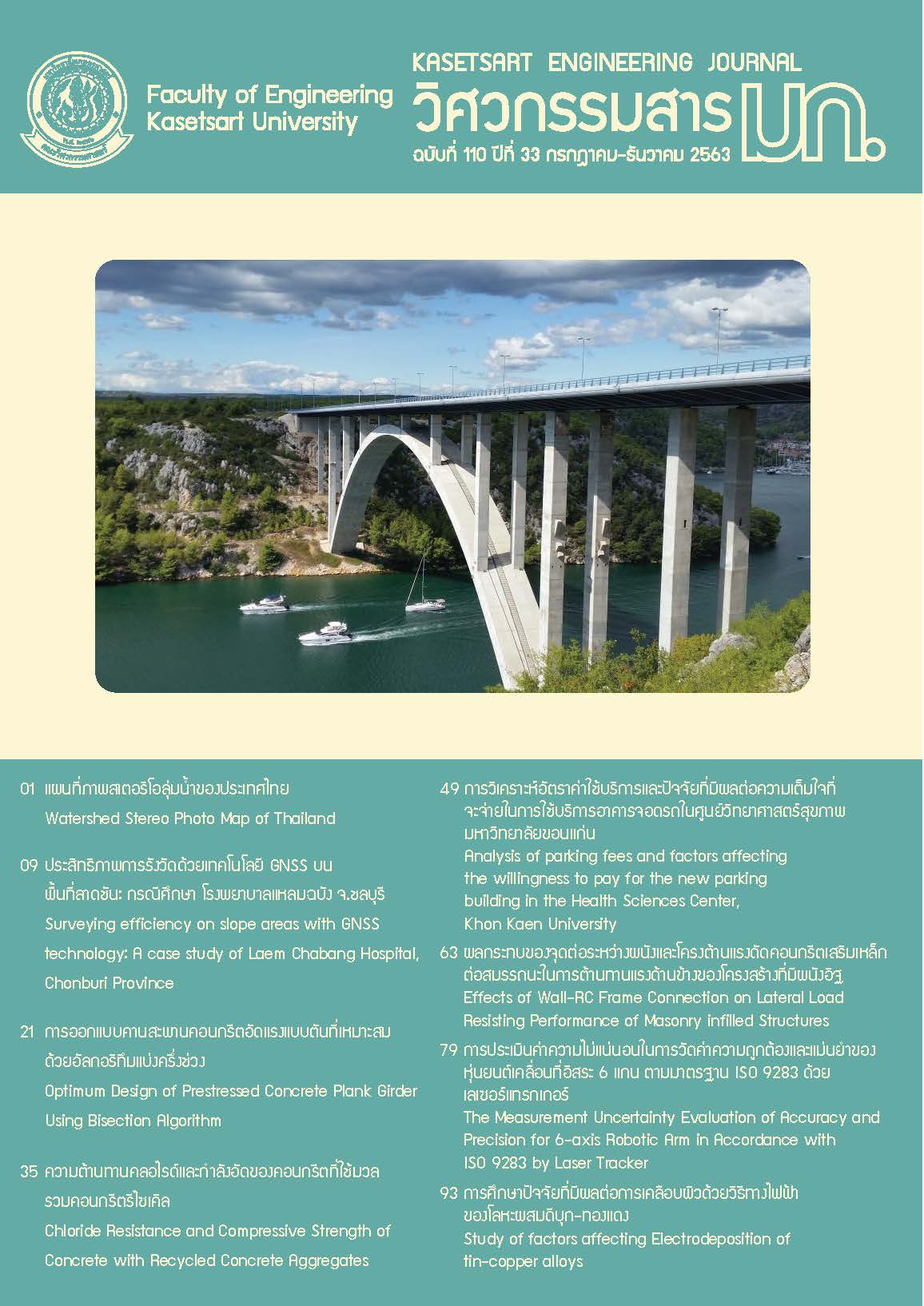Study of factors affecting Electrodeposition of tin-copper alloys
Keywords:
Corrosion Resistance, Electrodeposition, Tin-Copper Alloys Coating, Pulse Current, Temperature Bath, AdditivesAbstract
The processes of coating bronze or tin-copper alloys by electrodeposition have been employed for a long time in various applications such as jewelry, antiques, and bearings. These processes were used for improving properties such as topography, corrosion resistance of the coating surface. The desirable properties of the materials depend on various factors used in the coating process including temperature, coating duration, concentration of the electrolyte solution, applied current, and voltage. Therefore, the purpose of this article is for studying the effect on electrodeposition of tin-copper alloys to the following properties: improvement of surface finish by adding additives, studying corrosion prevention by varying quantities of tin including increasing the temperature in the coating process, and improvement of the microstructure with pulse current.
References
กิตติพันธุ์ บางยี่ขัน (2551). ดีบุก. In: Metal and the development of the country. กรมอุตสาหกรรมพื้นฐานและการเหมืองแร่.
Available via. http://www.dpim.go.th/articles/article?catid=125&articleid=3269.
Bonfiglioli Industrial (2001). Tin and Tin Alloys. In: Total Material Article. Available via. https://www.totalmateria.com/page.aspx?ID=CheckArticle&site=ktn&LN=TH&NM=26.
Walsh F C, and C T J Low (2016). A review of developments in the electrodeposition of tin-copper alloys. Surface & Coatings Technolog.
Kasach A A, and et al (2018). Effect of Sonochemical Treatment Modes on the Electrodeposition of Cu–Sn Alloy from Oxalic Acid Electrolyte. Applied Electrochemistry and Metal Corrosion Protection.
Walsh F C (2015). A review of developments in the electrodeposition of tin. Surface & Coatings Technology.
Grainger S, and Blunt J, Eds. (1998). Electrodeposited coatings. Matals and Surface engineering.
Wu L, J E Graves, and A J Cobley (2018). Mechanism for the development of Sn-Cu alloy coatings produced by pulsed current electrodeposition. Mater. Lett.
Mali, Sae-ung (2001). A study of factors affecting plating thickness in electroplating process. Master’s thesis, Faculty of Engineering, Department of Industrial Engineering, Chulalongkorn University, Thailand.
ศูนย์พัฒนาและวิเคราะห์สมบัติของวัสดุ MTEC (2017). การวิเคราะห์สมบัติทางไฟฟ้าโดยวิธีไซคลิกโวลแทมเมตทรี.
Pewnim N, and S Roy (2013). Electrodeposition of tin-rich Cu–Sn alloys from a methane sulfonic acid electrolyte. Electrochimica Acta.
Perez N (2004). Electrochemistry and Corrosion Science. New York, Boston, Dordrecht, London, Moscow: Kluwer Academic.
Sürme Y, and et al (2009). Systematic corrosion investigation of various Cu–Sn alloys electrodeposited on mild steel in acidic solution: Dependence of alloy composition. Journal of Alloys and Compounds.
Jung M, G Lee, and J Choi (2017). Electrochemical plating of Cu-Sn alloy in non-cyanide solution to substitute for Ni undercoating layer. Electrochimica Acta.
Meudre C, and et al (2015). Elaboration of copper-tin alloys coatings: Effect of glycine. Journal of Materials and Environmental Science.
Sharma A, and et al (2014). Effect of various additives on morphological and structural characteristics of pulse electrodeposited tin coatings from stannous sulfate electrolyte. Applied Surface Science.
Gamburg Y D, and G Zangari (2011). Theory and Practice of Metal Electrodeposition. New York: Springer New York.
Beheshti M, and et al (2018). Influence of deposition temperature on the corrosion resistance of electrodeposited zinc-nickel alloy coatings. Materialwiss. Werkstofftech.
Hamada A, and et al (2016). Characterization and resistance to corrosion of coated parts made of steel Journal of Engineering and Applied Sciences.
Kartal M, and et al (2015). Pulse electrocodeposition of Ni/MWCNT nanocomposite coatings. Surface Engineering.
Sharma A, and et al (2012). Influence of current density on microstructure of pulse electrodeposited tin coatings. Materials Characterization.
Dela Pena E M, and S Roy (2018). Electrodeposited copper using direct and pulse currents from electrolytes containing low concentration of additives. Surface and Coatings Technology.


